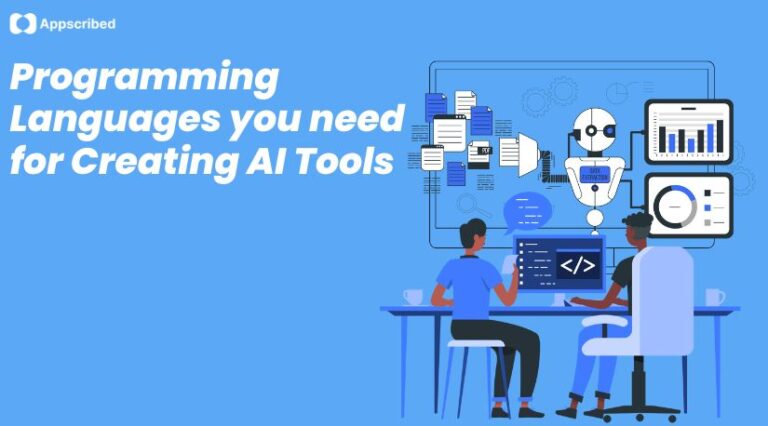When you are looking for reliable web app developing service provider, it’s important to understand two things. First, what are the requirements of the project you want to develop, second – what are the trends dominating the market right now in the niche you are looking into?
While the first aspect is not something someone else can decide for you, keeping up with the trends can be a bit tedious if you are not sure where to start.
To help with this dilemma, in this article, we will go over the major trends in web app development.

Progressive Web Apps (PWAs)
Progressive Web Apps are one of the most popular trends in web app development and top choice of any web app development service provider nowadays. But what are they?
PWAs are web applications operating as if they were native mobile applications. They have two main benefits:
- Working offline
- Loading fast
That’s exactly what contributes to PWAs providing a smoother user experience – just like an app from a mobile store.
Probably one of the most important benefits of PWAs is the fact that they can work offline. Users can run the app even without an Internet – a great advantage for users with an unstable connection, for example.
Another factor where PWAs outperform traditional web apps is their speed. They are much faster as they are based on a technology known as “service workers,” which caches the content. This makes PWAs more responsive and helps them load faster.
Single Page Applications (SPAs)
Another big trend in web application development is Single Page Applications – SPA. SPAs load all content onto a single page, unlike traditional web apps, which load new pages from the server every time a user clicks a link. This means once the app has loaded, it feels incredibly fast because only the necessary data is loading when a user interacts with the app.
The main advantage of SPAs is smooth page transitions. Since the application does not have to load the full page every time it can offer a much more seamless experience. This is huge for things like social media, email services, or online marketplaces, where users interact with the page constantly. Also, SPAs reduce the load on the server, which helps to reduce the cost of hosting.
AI and Machine Learning Integration
Artificial Intelligence and Machine Learning are no longer just buzzwords – those are huge features of a lot of applications on the market.
One of the main ways in which AI is implemented in apps is by providing recommendations. For example, an AI can analyze a user’s purchase history, and then recommend items that they might like based on their previous experience and behavior online. This leads to both better user experience and improved sales for the business.
Another popular use of AI and ML is chatbots. Chatbots can answer simple questions asked by customers, provide basic support in real-time, and help users navigate through the app. It takes the load of customer support teams who often need to communicate with a lot of clients, many of whom face similar problems. Those issues typically have the same solutions and can be answered by a chatbot – so all the parties win.
AI technology can help analyze information, behaviors, trends, and a lot more. It’s a useful tool to automate manual tasks that happen daily and usually have simple solutions. Or on the other hand – tedious challenges could be solved quicker with the assistance of an AI, rather than done by hand.
Responsive Design
You have probably heard that making every web app responsive and adaptive is a must. But what do these terms actually mean?
Responsive design entails a few things:
- First, that your web app looks great on any device – that UI looks pleasant on a smartphone, tablet, or computer;
- Second, the layout of the application adjusts to the size of the screen, so that’s a UX consideration.
Adaptive design means that the application “adapts” to different devices. It adjusts the content to fit the device, rather than just resizing the layout, like in responsive design.
For example, on a mobile device, you might need to simplify the navigation and make the buttons bigger to be usable on a small screen.
Responsive and adaptive design are both important to make sure your web app runs well on different devices, so all the users stay happy. If your application isn’t working well on smartphones for example, then you’re going to lose people who mostly use the app through their phones – which is the majority of the population, by the way. So it’s not a trend to pass, that’s for sure.
API-first Development
API-first development is gaining popularity among companies that want to future-proof their web applications. The basic meaning behind this trend is in the name: this means the priority is to focus on APIs – application programming interface – in web application development solutions.
One of the biggest benefits of this approach is that it makes your web app easy to integrate with other services and platforms. That’s basically what API is for, in simple terms – a way for other platforms to access your app. A must-have feature that we see a lot on the market.
Not to mention, that API-first development can also provide a much more uniform experience across different platforms. Suppose that you need to develop a web app and a mobile app – you can use the same API to make sure both of them will share the same data.
This is the solution to scalability and flexibility – two words you will hear a lot in development. And for a good reason too, since those two traits are behind making an application future-proof.
Also Read:
Generative AI Code’s Trends in Software Development in 2024
Best AI Programming Languages for Creating AI Tools
Conclusion
Those were the main trends that have dominated the web app development market for a while now. Each of them is here to stay and for a good reason too – those features contribute to a web app being both an enjoyable experience for a user, while also being a profitable venture for business. Only by striking this balance can a web app become a true long-term success.









